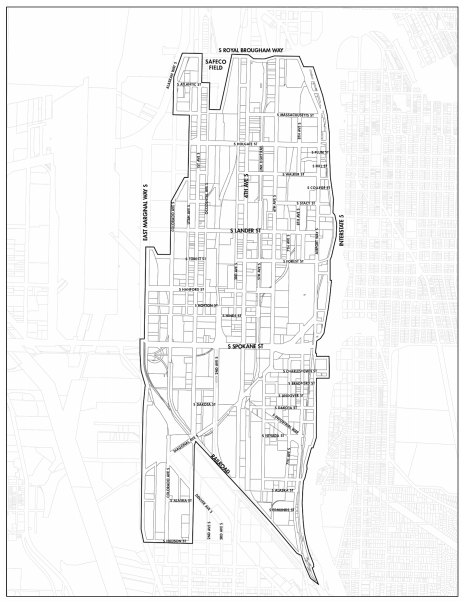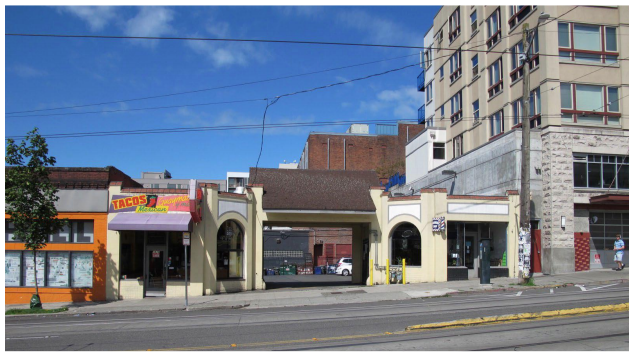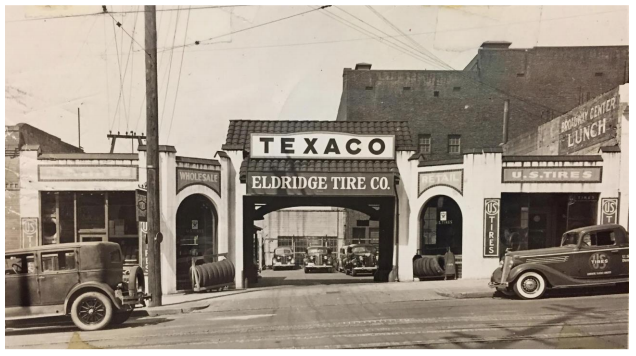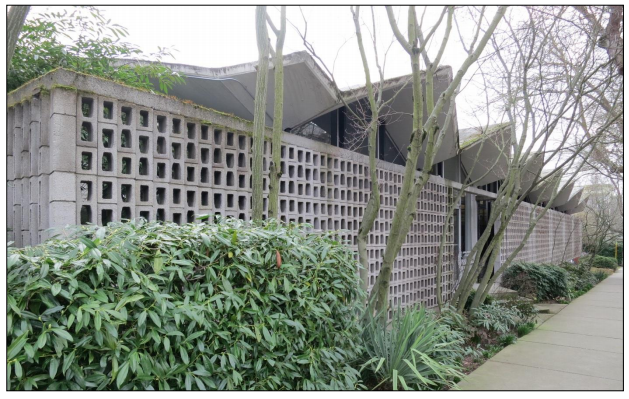On Monday, the Seattle City Council decided the process to establish a business improvement area in the SoDo district and the fate of two landmarks. The city council approved the formal landmarking of a former Auto Row retail building in Capitol Hill and stark Modernist office building in Fremont. The city council also set in motion a process to form a special business improvement area that would fund special tasks in the SoDo district and impose special assessments on business improvement area ratepayers.
SoDo Business Improvement Area
Later this fall, a business improvement area could be approved for the SoDo district, extending from S Royal Brougham Way to areas south of S Spokane St. The business improvement area will be structured to focus on four core service areas: transportation, public safety, street cleaning and maintenance, and marketing and advocacy of the business district. All of this would be in addition to baseline city services, it would supplant existing services.

If the business improvement area is approved by the city council, special assessments at $0.50 per $1,000 of total taxable value would be levied on all commercial, industrial, mixed-use, and multifamily properties within the area for 10 years. Tax-exempt properties may also be obliged to pay assessments if they area are leased to commercial tenants, which case the assessment would be $0.03 per square foot.
On August 7th, the city councils Governance, Equity, and Technology Committee will hold a public hearing on the proposal at 9.30am to consider testimony in favor and against the proposal.
Eldridge Tire Company Building

On the site of the Eldridge Tire Company Building (1519 Broadway), Sound Transit and Capitol Hill Housing plan to construct affordable housing units. The structure, however, was designated by the Landmarks Preservation Board in March 2017 due to its architectural style and cultural connection to Capitol Hill’s automotive history. The structure in situated midway between E Pike St and E Pine St with a series of one-story retail spaces. Behind the structure is an open parking lot.
When the building was built in 1925, it was designed by A.H. Albertson in the Mission Revival Style. Several other landmarked structures in the city contain similar design features, but the adapted design for a tire retailer is notable. Preservation controls will apply to the full building exterior, which will presumably be incorporated into Capitol Hill Housing’s redevelopment plans.

The overall site that the Eldridge Tire Company Building sits upon is 14,400 square feet, enough to fit a sizable six-story building under existing mixed-use zoning (NC3P-65). Capitol Hill Housing plans to develop the site as mixed-use with ground floor retail and 78 affordable housing units above. The affordable housing provider is contemplating 24 studio units, 42 one-bedroom units, and 12 two-bedroom units that would be targeted at households making 60% or less of the area median income. Other amenities for the residential component include a bike workshop and storage, rooftop terrace, and lounge space. So far, a formal project proposal has not been submitted for design review.
Shannon & Wilson Office Building

Oddly, the Landmarks Preservation Board also designated what can only be described as a glorified Modernist bomb shelter masquerading as an office building just off of Stone Way in Fremont. Known as the Shannon & Wilson Office Building (3670 Woodland Park Ave N/1101-1111 N 38th St), the building is a fairly nondescript structure managed to check off five of the six designation criteria used by the board. The one-story, 9,990-square foot structure was built in 1960–the city of building era of Modernism and Brutalism–and designed by global architecture firm NBBJ. The building is now home to Robert McNeel & Associates, a software firm.
Preservation controls will apply to the entirety of the site and building exterior. However, the building is located in a very hot area of the city for redevelopment and faces three recently built structures. It also has a large surface parking lot eating up space. The site is currently zoned C1-40, a four-story commercial zone, but is proposed to be rezoned to NC2-75 (M1), a seven-story mixed-use zone with affordable housing contribution requirements. So far, no development proposals have been submitted for the site.
Stephen is a professional urban planner in Puget Sound with a passion for sustainable, livable, and diverse cities. He is especially interested in how policies, regulations, and programs can promote positive outcomes for communities. With stints in great cities like Bellingham and Cork, Stephen currently lives in Seattle. He primarily covers land use and transportation issues and has been with The Urbanist since 2014.


